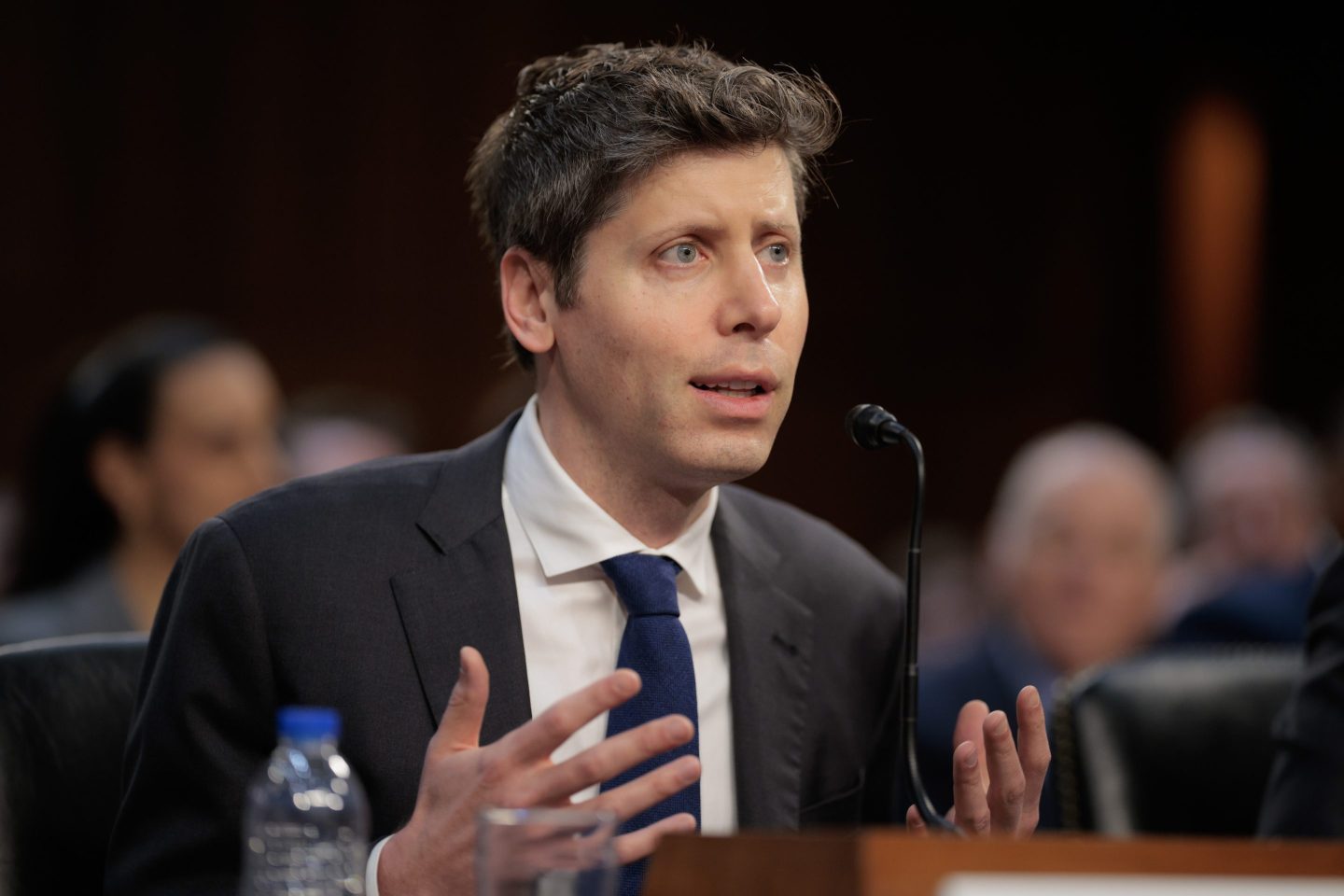Earlier this spring, Alex Balazs hosted an internal hackathon at business software provider Intuit, where the chief technology officer challenged his global team of engineers to embrace artificial intelligence in their work as much as they could.
To give them the tools to do so, one week before the biannual meeting, Balazs approved the usage of “every AI coding tool that we’re aware of,” including Qodo, Windsurf, and Cursor. He quickly saw that thousands of Intuit’s engineers were using these tools, up from hundreds previously.
“Our metrics are showing us that engineers love it,” says Balazs. Intuit is tracking how frequently the AI coding tools are being used, the steadiness of that usage over time, and productivity. Early indications are that efficiency gains can be as high as 40%.
Along the path to going all-in on AI coding assistant tools, Balazs finds himself enticed by a new concept called “vibe coding.” It is a term that was coined earlier this year by OpenAI cofounder Andrej Karpathy where users describe a project’s goals in simple, natural language to an AI-powered coding platform like Windsurf, which then writes the code.
Balazs recently experimented with vibe coding when using Windsurf to create a tool that would allow him to import data from a competitor product directly into Intuit’s QuickBooks software. “I found myself making significantly more progress with my rusty coding skills than probably I would have otherwise,” says Balazs.
The extent to which the “vibe coding” hype ultimately turns out be a real force that upends workflows across the business world remains to be seen. But the industry’s largest AI hyperscalers are paying very close attention. OpenAI is reportedly in talks to acquire vibe-coding software startup Windsurf for $3 billion. Apple and Anthropic reportedly joined forces to develop their own AI-powered vibe-coding platform. And more and more code is already being written by AI: at Microsoft, as much as 30% today.
Better reasoning models, which can understand the nuances of natural language and translate that into code, are a key factor propelling the trend. “This past winter is where the vibe coding wave really started to take off,” says Alex Albert, head of developer relations at AI startup Anthropic. Newer reasoning models, like Claude 3.7 Sonnet, are enabling developers to take a more hands-off, managerial approach.
Walter Sun, global head of AI at German business software firm SAP, says the conversation swirling around vibe coding reminds him of the earliest days of his career. His older peers would tell him he wasn’t a true developer because Sun didn’t do punch card programming, the use of physical cards to instruct early computers. “I believe that vibe coding is just a further evolution of productivity for development,” says Sun.
He says the principles of vibe coding, along with the broader use of AI-enabled coding tools, is an encouraging trend for developers who are creating generative AI tools to eliminate mundane tasks for the broader workforce. But they should also be thinking of ways to use AI to make their work more efficient. “I think that it’s actually great that developers are drinking their own champagne,” adds Sun.
In March, SAP rolled out an AI-enabled tool for the company’s developers, intended to accelerate workflows by performing code competition and offer code explanation to older forms of code that newer developers may not be familiar with. This tool embraces the principles of vibe coding, Sun says, and internal analysis shows that code is being produced 20% faster than the rate before this tool was rolled out.
Albert says Anthropic is currently having sales conversations with enterprise customers to explain what vibe coding is. Anthropic has done this type of education around AI agents, explaining what these systems are, when and when not to use them, and the frameworks necessary to implement them. “When a company says, ‘I want to lean into vibe coding,’ it is more about how we can give our software engineers more power and more control over these AIs and allow them to build way more, way faster,” says Albert.
Todd Olson, cofounder and CEO of Pendo, says vibe coding has helped inspire him to take up coding again. “It is harder for me to lead the business if I don’t have first-hand experience with what these solutions do,” says Olson. “It allows me to set a strategy much, much easier.”
Roughly a third of the software company’s 900 employees are engineers and vibe coding is permeating across the broader workforce, mostly helpful in the earliest stages of software development, including prototyping. With a more iterative process, Olson expects that Pendo and others can rapidly accelerate the software development cycle. “Historically, it has been hard and slow to get software out,” says Olson. “We’re all just going to test more.”
Technologists say that vibe coding won’t replace all of the work of the engineer. As an example, all AI-generated code that Pendo may use during the software development lifecycle doesn’t go right into production. There is still an employee review process to ensure that the code that’s AI-generated has no security loopholes and adheres to Pendo’s coding standards.
That said, AI coding tools are already changing workflows. The primary role of a software engineer is tilting more toward editing code, rather than writing it.
“Technology has been happening for literally thousands of years,” says Balazs. And each time it occurs, he argues, workers must make a choice to either adapt or not. “All the best engineers will be using these tools,” he added. “So if you want to be one of the best engineers, use these tools.”
John Kell
Send thoughts or suggestions to CIO Intelligence here.
NEWS PACKETS
AI's very busy week of geopolitics. President Donald Trump announced a deal with the United Arab Emirates to build a new 5GW AI campus, which would be the largest outside the U.S., and purportedly will help American companies serve customers in Africa, Europe, and Asia. Tech giants Nvidia, Cisco, Oracle, and OpenAI are reportedly supporting the project, according to CNBC. Separately, Trump’s administration has also worked out pacts with Saudi Arabia to buy tens of thousands of semiconductors from Nvidia and Advanced Micro Devices. (AMD is the sponsor of this newsletter but does not have editorial input.) The New York Times, meanwhile, reports on another geopolitical AI story: It says the White House is scrutinizing Apple’s planned deal with Chinese company Alibaba to make that company’s AI available for iPhones in China. The concern there is that such a deal would help a Chinese company improve its AI capabilities.
Meta hits a snag for rollout of new flagship AI model. Meta, which is spending tens of billions annually on AI, is reportedly struggling to bolster the capabilities of a flagship large-language model known as “Behemoth.” The Wall Street Journal, citing people familiar with the matter, reports that the tech giant is delaying the rollout of Behemoth because engineers haven’t been able to significantly improve the LLM’s capabilities. Initially slated for an April launch to coincide with Meta’s AI conference for developers, the company later pushed the target for the release to June but is now reportedly planning to launch Behemoth in the fall or even later. Notably, at this point, the Journal reports that engineers are worried that Behemoth won’t match public statements about its capabilities. Previously, Meta had said testing for Behemoth already indicated outperformance of similar technology from rivals like OpenAI and Anthropic.
OpenAI previews a new AI coding agent. In recent weeks, OpenAI has found itself in the news quite a bit on the topic of AI-assisted coding. At the beginning of the month, Bloomberg reported that OpenAI had reached an agreement to buy Windsurf in a yet-to-be-completed deal for about $3 billion. More recently, the Journal reports the company debuted a new software engineering agent known as Codex, which can perform several tasks at the same time, including writing code, fixing bugs, and running tests. AI-assisted coding has been a particularly enticing use case for enterprises, with many CIOs reporting a productivity lift of around 20% to 30% when engineers use these tools to support their workloads. There’s also plenty of competition in the space: Microsoft, Anthropic, and Google are among the tech giants that are aggressively selling AI coding tools.
Federal government squeezes tech vendors on price. Bloomberg reports that Salesforce is planning to offer its Slack team collaboration application to the federal government at a discounted rate, following in the footsteps of tech rivals including Adobe and Alphabet’s Google, who have also in recent weeks been offering discounts. Slack will be available to federal agencies at as much as a 90% discount through November, according to a statement released on Monday from the General Services Administration. Josh Gruenbaum, the commissioner of the Federal Acquisition Service in the GSA, says that the Trump administration wants to leverage the federal government’s purchasing power for better pricing and to get more discounted contracts in the next fiscal year. “There’s no product here that is too big or too small for us to engage in,” Gruenbaum told Bloomberg.
ADOPTION CURVE
As health care embraces AI, a trust gap emerges between professionals and patients. Hospital staff shortages, an aging population in the U.S., and the high cost to develop new treatments make the health care system an enticing sector for AI. These technologies can speed up research and development, reduce mundane tasks like billing and transcribing clinician conversations, and analyze medical data and images to improve the accuracy of diagnoses. But doctors and patients don't share the same enthusiasm for AI technology, according to a survey of 1,926 health care professionals and 16,144 patients.
The report, commissioned by Dutch health technology company Philips, found that while 79% of health care professionals are optimistic that AI could improve patient outcomes only 59% of patients share a similar sentiment. Patients were far more comfortable with AI being used to help scheduling appointments and assisting with check-ins. Support drops when use shifted into clinical areas. One out of every two patients also expressed concern that relying more on technology would mean less face time with their doctors.
Philips says that patients who know more about AI tend to be more comfortable with its use, adding that this group also tends to seek stronger assurances. One recommended way to build more trust: Patients prefer to get more information and reassurance from their doctor or health care provider rather than from social media or news outlets.
JOBS RADAR
Hiring:
- Prudential Financial is seeking a VP, tech lead, based in Newark, N.J. Posted salary range: $195.1K-$263.9K/year.
- Exelon is seeking a director of digital services, based in Penns Grove, N.J. Posted salary range: $168.8K-$232.1K/year.
- Point72 is seeking a head of commodities technology, based in New York City. Posted salary range: $350K-$400K/year.
- Hasbro is seeking a VP of go-to-market technology, based in Pawtucket, R.I. Posted salary range: $225.6K-$338.4K/year.
Hired:
- Charter Communications (No. 76 on the Fortune 500) named Jake Perlman to the newly created role of EVP and chief technology and information officer, expanding his existing duties to fully integrate the software, engineering, and technology operations at the cable giant. Perlman joined Charter in 2016 and has held various leadership roles, including SVP of software development. Previously, he was CIO of telecom company Bright House Networks.
- Lincoln Financial (No. 354 on the Fortune 500) announced the appointment of Tom Anfuso as SVP and CTO, reporting directly to CIO Jennifer Charters and becoming a member of the insurance company’s corporate leadership group. Anfuso previously served as managing director and CTO at JPMorgan Chase, where he led the technology integration of acquired companies in Chase’s connected commerce line of business.
Every Friday morning, the weekly Fortune 500 Power Moves column tracks Fortune 500 company C-suite shifts—see the most recent edition.
- Redpanda announced the appointment of Tyler Akidau as CTO, joining the AI startup to oversee all aspects of product development and reporting to CEO Alex Gallego. Previously, Akidau spent more than five years at cloud-based data storage company Snowflake, where he served as distinguished software engineer. Akidau also spent nearly 12 years at Google, including as senior staff software engineer.
- Oklo announced the appointment of Pat Schweiger as CTO, joining the nuclear technology company after most recently serving as EVP of engineering at thermal battery energy storage company Fourth Power. He’s also held engineering leadership roles at fusion startup Commonwealth Fusion Systems and advanced reactor developer TerraPower.
- LifeStance Health announced Vaughn Paunovich will join the mental health provider as CTO, effective June 9. Most recently, Paunovich served as EVP of enterprise platforms at telemedicine provider Amwell. Prior to Amwell, he spent ten years at UnitedHealth Group in various leadership roles, including serving as CIO of Optum Health.
- EverDriven named Mon-Chaio Lo to the role of chief product and technology officer (CPTO), overseeing the development of AI solutions for the student transportation services provider. Previously, Lo served as a director of engineering at both Meta and Uber and served as a principal software development manager at Microsoft.
- Voltage Park appointed Saurabh Giri to the role of CPTO, where he will steer the product roadmap and lead engineering for the AI cloud-computing company. Previously, Giri served as director of engineering for Amazon Bedrock, the tech giant’s AI app development platform.
- PepGen announced the appointment of Kasra Kasraian as CTO, joining the clinical-stage biotechnology company from bluebird bio, where he held various roles, including most recently a SVP. Previously, Kasraian held scientific and leadership roles at Biogen, Wyeth Biotech, Pfizer, and Genetics Institute. PepGen focuses on developing treatments of severe neuromuscular and neurological diseases.
- Upstream Bio named Stacy Price as CTO, where she will oversee the expansion of technical operations and product development for the clinical-stage company that’s focused on developing treatments for severe respiratory disorders. Price most recently served as chief technology and manufacturing officer at biotechnology company Invivyd. She also held leadership roles at Ziopharm Oncology and Shire.













